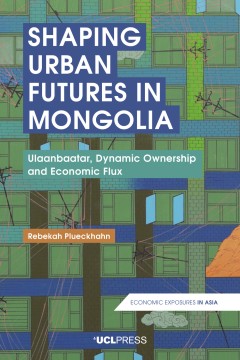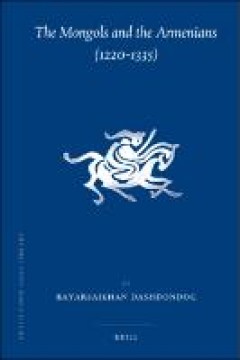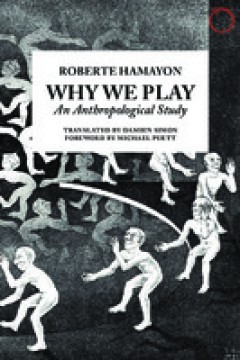Filter by

Mongol Court Dress, Identity Formation, and Global Exchange
The Mongol period (1206-1368) marked a major turning point of exchange – culturally, politically, and artistically – across Eurasia. The wide-ranging international exchange that occurred during the Mongol period is most apparent visually through the inclusion of Mongol motifs in textile, paintings, ceramics, and metalwork, among other media. Eiren Shea investigates how a group of newly-conf…
- Edition
- -
- ISBN/ISSN
- 9781032238432
- Collation
- xvii,207 p
- Series Title
- -
- Call Number
- 391.00951 HEA M

Shaping urban futures in Mongolia : Ulaanbaatar, dynamic ownership and econom…
What can the generative processes of dynamic ownership reveal about how the urban is experienced, understood and made in Ulaanbaatar, Mongolia? Shaping Urban Futures in Mongolia provides an ethnography of actions, strategies and techniques that form part of how residents precede and underwrite the owning of real estate property – including apartments and land – in a rapidly changing city. I…
- Edition
- -
- ISBN/ISSN
- 9781787351523
- Collation
- xv, 167 p. ill;
- Series Title
- -
- Call Number
- 307.7609517 SHA R

The Mongols and the Armenians (1220-1335)
In the thirteenth century, the Armenians of Greater Armenia and of the Armenian Kingdom in Cilicia were invaded by Mongol nomads of the Inner Asian steppe. The ensuing Mongol-Armenian relations were varied. The Greater Armenians became subjects of the Mongol Empire, whereas the Cilician Armenians, by entering into vassalage, became allies and furthered the Mongol conquests. In order to enhance …
- Edition
- -
- ISBN/ISSN
- 9789004186354
- Collation
- xiii, 267 p. : ill
- Series Title
- -
- Call Number
- 956.62014 DAS t

Why we play
Whether it’s childhood make-believe, the theater, sports, or even market speculation, play is one of humanity’s seemingly purest activities: a form of entertainment and leisure and a chance to explore the world and its possibilities in an imagined environment or construct. But as Roberte Hamayon shows in this book, play has implications that go even further than that. Exploring play’s man…
- Edition
- -
- ISBN/ISSN
- 9780986132568
- Collation
- xxi, 370p.
- Series Title
- -
- Call Number
- 790
 Computer Science, Information & General Works
Computer Science, Information & General Works  Philosophy & Psychology
Philosophy & Psychology  Religion
Religion  Social Sciences
Social Sciences  Language
Language  Pure Science
Pure Science  Applied Sciences
Applied Sciences  Art & Recreation
Art & Recreation  Literature
Literature  History & Geography
History & Geography